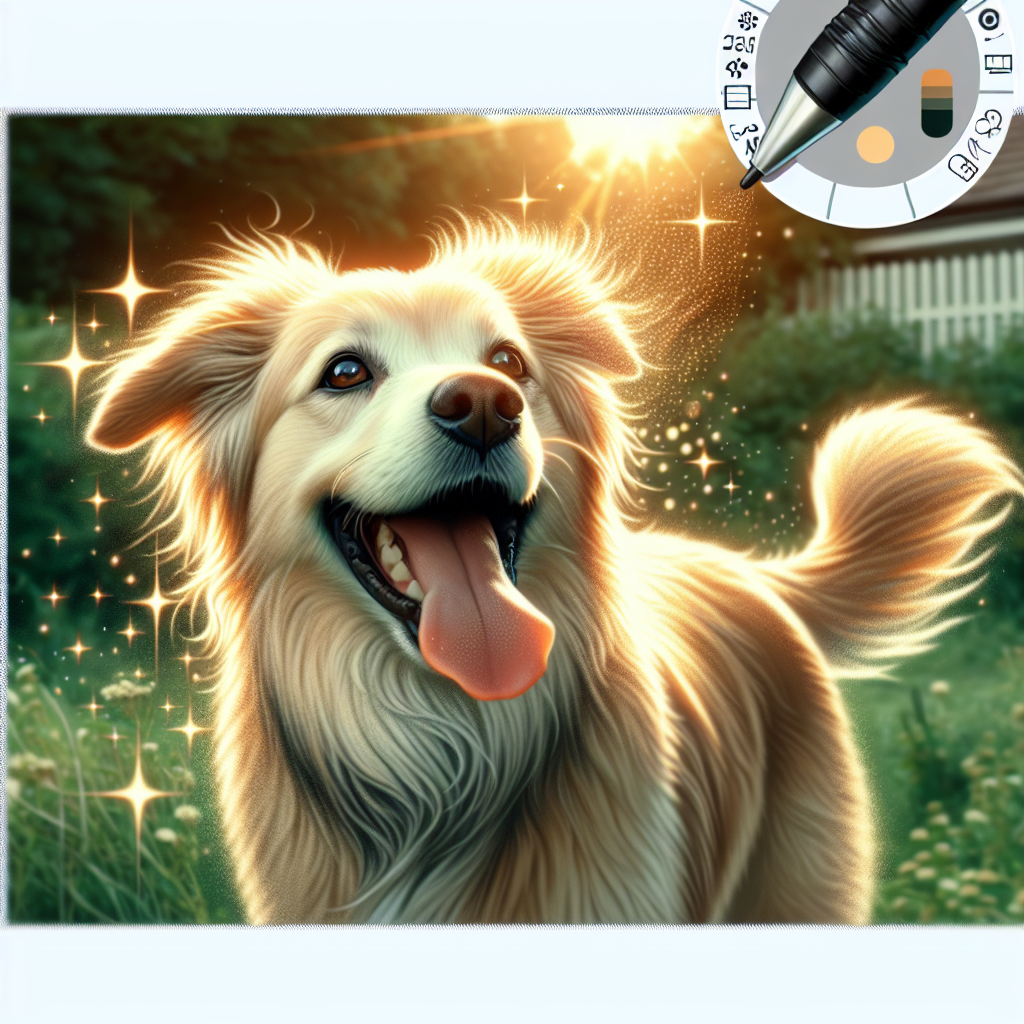Unmasking the Flea Problem

Fleas. Those tiny, hopping annoyances that seem to pop up out of nowhere. They’ve been around forever, it seems, and if you’ve ever had a pet, you’ve probably faced them. It’s like a never-ending battle—just when you think you’ve got them beat, they come back with a vengeance. Flea infestation solutions are like trying to find a needle in a haystack. So many options and yet, none seem to stick. You’ve tried powders, collars, and who-knows-what-else, but those little pests keep coming back like bad karaoke.
You know the drill. You walk into your living room, and there it is—a tiny black dot doing the cha-cha across your carpet. You panic, you itch, and you start searching for the holy grail of flea extermination reviews, hoping someone out there has cracked the code. This is where SayByeBugs enters the scene, promising a different approach to the age-old problem. But does it work, or is it just another quick fix in a long list of failed attempts?
SayByeBugs: A Quick Fix or Long-Term Solution?
When it comes to SayByeBugs effectiveness, the jury’s still out. Some folks swear by it, claiming it’s the miracle they’ve been searching for. Others, not so much. It’s a non-toxic flea spray, which is a major plus—no one wants to douse their home in chemicals, right? Especially when you’ve got pets running around like lunatics.
You read the reviews, and they’re all over the place. Some people are shouting from the rooftops about how this stuff saved their sanity, while others are scratching their heads—and their arms—wondering if they got a dud bottle. It’s a bit like buying a used car: you hope it’s reliable, but you’re never quite sure until you take it for a spin.
But here’s the thing: SayByeBugs is pet-safe flea control. It’s designed to tackle the problem without putting your furry friends at risk. And that’s a huge relief because let’s face it, our pets are part of the family.
How SayByeBugs Works: A Breakdown
Alright, so how does SayByeBugs work? It’s supposed to be simple. You spray it on, and it starts doing its magic, breaking down the flea’s exoskeleton. Sounds like something out of a sci-fi movie, right? But it’s all about the science, or so they say.
You don’t need a PhD to use it, which is a relief. Just spray it wherever the little critters like to hang out—carpets, pet bedding, and even on your pets. It’s not rocket science, but it sure feels good when you find a solution that doesn’t require a manual as thick as a phone book.
The idea is that it’s a quick flea removal tip that’s easy to use. No need for hazmat suits or a chemistry set. Just a bottle and a spray nozzle. But remember, just because it’s easy doesn’t mean it’s foolproof. It’s all about the follow-through.
Safe for Pets and Humans?
Now, safety. That’s a biggie. With so many products out there, finding one that’s both effective and safe is like hitting the jackpot. SayByeBugs claims to be all that—non-toxic and pet-safe. You can use it around the house without worrying about your pets turning into zombies.
But let’s be real. Whenever you’re trying something new, there’s always that little voice in the back of your head whispering, “Are you sure about this?” It’s like when you try a new recipe and you’re halfway through, thinking, “This better not be a disaster.”
From what I’ve gathered, folks who’ve used SayByeBugs love that it doesn’t leave a chemical cloud hanging over their living room. It’s not about being paranoid, but it’s nice to know you’re not exposing yourself or your pets to something sketchy.
Real Stories from the Trenches
And then there are the stories. Personal flea battle stories that make you laugh and cringe at the same time. Like the time Susan from Ohio found herself knee-deep in flea chaos. She tried everything—bombs, shampoos, even a DIY concoction involving vinegar. Nothing worked. Until she stumbled upon SayByeBugs. She gave it a whirl, and voilà! Her flea nightmare was over. Or so she claims.
Then there’s Dave from Texas, who thought he had it all figured out. He followed the instructions to a tee, but those fleas were like uninvited guests who just wouldn’t leave. He was ready to throw in the towel when he decided to give SayByeBugs one last shot. Miraculously, it worked, and now he’s a believer.
These stories are like a rollercoaster of emotions. You feel their pain, their frustration, and finally, their relief. It’s relatable, and it gives you hope that maybe, just maybe, your flea woes can be a thing of the past.
So there you have it. Fleas might be tough, but with a little persistence and the right tools—who knows? You might just say goodbye to those bugs for good. Thanks for reading, and here’s wishing you all the best in your flea-fighting adventures!
The Sneaky Life Cycle of Fleas: It’s Not Just a Hop, Skip, and Jump
Ah, fleas. Those little jumpy devils that seem to appear out of nowhere. But, let me tell ya, their life cycle is like a covert operation. It’s not just about hopping onto your pet and calling it a day. Nope. These critters have a plan—one that involves a series of stages that would put any secret agent to shame.
First, you’ve got the eggs. They’re laid in batches of 20 or so, and they don’t stick around. Literally. They roll off your pet like tiny escape artists, landing in your carpet or couch. Then, there’s the larval stage. These guys are like the teenagers of the flea world—always hiding from the light, only coming out when it’s dark and quiet. Next, they cocoon themselves as pupae. This is their metamorphosis moment, waiting for the perfect time to emerge as adult fleas.
The adult stage is where the chaos begins. They jump onto your pet, bite, and start the whole cycle over again. It’s a relentless loop that can drive any pet owner up the wall. That’s where saybyebugs comes into play, breaking this cycle in a way that feels almost magical.
The Science Behind Saybyebugs: How It Works Its Magic
Now, you might wonder—how does saybyebugs do its thing? It’s not sorcery, though it feels like it. It’s science, plain and simple. The effectiveness of saybyebugs lies in its ability to disrupt the flea life cycle stages. It doesn’t just target one stage; it goes for the jugular, hitting them at every point.
Saybyebugs uses a natural approach, which is kind of cool if you think about it. No harsh chemicals, just a blend of ingredients that make fleas go, “Nope, not today.” It’s like they’re trying to throw a party, and saybyebugs is the bouncer, saying, “Sorry, not on the list.” It’s a smarter way to tackle the flea problem without making your home smell like a science experiment gone wrong.
Real Stories: Pet Owners Who’ve Tried It and Lived to Tell the Tale
Let’s talk about the real heroes here—the pet owners. I spoke with a few who’ve tried saybyebugs, and they’ve got stories that could fill a book. Take Mary, for instance. Her dog, Max, was a flea magnet. She tried everything, from flea collars to shampoos, but they just kept coming back. Then, she stumbled upon saybyebugs, and it was like a breath of fresh air. “Max finally stopped scratching like a madman,” she said. “It was a game changer.”
Then there’s Joe. He’s got two cats, and if you know cats, you know they’re not fans of flea treatments. He was skeptical at first, but gave saybyebugs a shot. “I couldn’t believe it,” Joe chuckled. “My cats didn’t freak out, and the fleas disappeared. I almost thought it was a prank.”
These stories aren’t just anecdotes—they’re real experiences from pet owners who found a solution in saybyebugs that actually worked. It’s like finding a needle in a haystack, but without the poking.
Safety First: What You Need to Know Before Using Saybyebugs
Before you rush off to try saybyebugs, let’s chat about safety. You don’t want to dive headfirst without knowing the lay of the land. Saybyebugs prides itself on being safe, but like anything you’re introducing to your pet, a few precautions are in order.
For starters, always read the instructions. I know, I know—who reads those? But seriously, they matter. Make sure your pets are in a well-ventilated area during application. And while saybyebugs uses natural flea control solutions, it’s good to check with your vet, especially if your pet has allergies or health issues. It’s about playing it safe, not sorry.
One more thing—store it out of reach. You’d be surprised how curious pets can be. It’s like they have a sixth sense for getting into things they shouldn’t. So, stash that bottle in a safe spot.
A Flea-Free Future: What It Means for You and Your Four-Legged Friend
Imagine a world where fleas aren’t a constant headache. Sounds dreamy, right? A flea-free future is what every pet owner dreams of. It’s not just about getting rid of the fleas—it’s about peace of mind and a happy pet.
Saybyebugs aims for long-term flea prevention, not just a quick fix. It’s like setting up a fortress around your home that fleas can’t break through. And when your pet’s not scratching and you’re not freaking out over flea bites, life just gets better.
As you embark on this journey, remember—you’re not alone. Many have walked this path and emerged victorious. So, here’s to you, the dedicated pet owner. Thanks for sticking it out and giving your furry friend a better life. You’re doing great, and I salute you.
Say Bye-Bye to Flea Shampoo: Natural Alternatives That Work
So, you’re looking at that bottle of flea shampoo, and you can almost hear your dog sigh. “Again?” It’s a dance we know all too well—lather, rinse, repeat. But what if there’s a better way? Enter the world of natural flea control for dogs. Yeah, you heard me right. These days, folks are swapping out the chemical baths for something a bit more… earthy.
You may have heard murmurings about saybyebugs for fleas. It’s making waves, and not the kind you get at the beach. People are talking about using essential oils and diatomaceous earth. Now, don’t roll your eyes. These natural solutions can pack a punch. Essential oils like lavender and cedarwood are not just for your next yoga session; they can also help keep the fleas at bay. And diatomaceous earth? It sounds fancy, but it’s just fossilized algae. Sprinkle a bit around your home, and watch those critters scuttle.
I’ve sat down with pet owners who swear by these methods. They talk about how their dogs are happier and their homes smell less like a chemical party. It’s not magic, but it’s close. These natural remedies mean you can say goodbye to the shampoo bottle—at least for fleas.
The Cost of Flea Control: What’s Worth Your Money?
Now let’s talk about your wallet. Flea treatments can cost an arm and a leg, and that’s just the start. The cost of flea control is like a sneaky little flea itself—always jumping up when you least expect it.
You’ve got options, though. Affordable flea treatments are out there, and they don’t have to rob you blind. Saybyebugs for fleas is one of those names that pops up. Folks are saying it’s not just effective but also within a budget. And trust me, I’ve seen more than a few bank accounts breathe a sigh of relief.
Let’s get real about costs. That shiny box at the pet store? It might promise the world, but can it deliver? You’ve got to do a flea control cost comparison. Weigh your options like you’re at a flea market bargaining for the best deal. Don’t just throw money at the problem—be smart about it. You want a solution that works without breaking the bank.
Stories from the Field: Real Pet Owners on Saybyebugs
Ah, the stories you hear when you chat with pet owners. Some tales are heartwarming, others downright hilarious. The common thread? Everyone just wants their pets to be happy and flea-free.
I met this one guy, a retired sailor, who swore by saybyebugs. His dog, Captain, was a flea magnet. But after trying out saybyebugs, things changed. The sailor described it in such vivid detail, I almost expected Captain to walk in, wagging his tail in victory. These pet owner flea testimonials aren’t just anecdotes—they’re real experiences that showcase the battle against these pesky critters.
Another story from the field involved a mom with three kids and two dogs. Chaos, right? She used saybyebugs as part of her arsenal. When she spoke about it, you could see the relief in her eyes. No more scratching and biting, just contentment all around. The testimonials are as varied as the people who tell them, but one thing’s clear—they’re onto something.
DIY Flea Traps: A Weekend Project for Pet Lovers
If you’re a weekend warrior like me, a DIY project is always on the horizon. And if it helps with fleas, even better. Homemade flea traps are the talk of the town, and they’re surprisingly easy to make.
Picture this: a shallow dish, some water, a bit of dish soap, and a light source. That’s it. Who knew that the solution to a flea problem could be so simple? The light attracts the fleas, and the soapy water traps them. It’s like a flea disco gone wrong.
For those of you with the itch to create, these traps can be a fun and effective way to deal with those unwelcome guests. And let’s not forget the satisfaction of seeing the results. It’s a weekend project that even the kids can get involved in. Just keep the enthusiasm in check—no need to turn the living room into a flea trap factory.
The Future of Flea Control: What’s Next in the War on Fleas?
So, what’s next? The future of flea control is more than just a sparkle in a scientist’s eye. It’s evolving, and fast. We’re talking about future flea control methods that could change the game entirely.
Innovations are coming at us like a freight train. Researchers are diving into genetic solutions, targeting fleas at their very core. Imagine a world where fleas are a thing of the past. Sounds like a sci-fi movie, right? But it’s closer than you think.
Meanwhile, saybyebugs is part of that conversation. It’s not just riding the wave; it’s making waves. The focus is on prevention, not just treatment. Flea prevention tips are becoming more sophisticated, blending science with practicality. It’s a brave new world, and we’re all just trying to keep up.
So, whether you’re sticking with the tried and true or ready to jump into the future, remember this: you’re not alone in the fight. Thanks for sticking with me through this flea journey. Here’s to you and your pet—may you both find flea-free days ahead. Cheers!
Quick Takeaways:
So, you’ve got fleas. Who hasn’t, right? Those little pests have been the bane of pet owners since forever. Saybyebugs for fleas has been a new player in town, promising to make those stubborn fleas disappear. Sounds like a miracle, but the real deal is that it’s a non-toxic flea spray that gets the job done without turning your home into a hazard zone. If you’re like me, juggling between flea infestation solutions can be a headache. But with SayByeBugs, many folks are finding a pet-safe flea control option that doesn’t break the bank. You spray it, and those fleas start waving their tiny white flags. From personal flea battle stories, it seems this stuff has a knack for kicking fleas out without the toxic aftermath.
People have been testing it out, and the feedback—well, it gives you hope. It’s like hearing a good flea extermination review when you’re at your wit’s end. For quick flea removal tips, it’s all about being consistent. Spray where those little vampires hang out, and don’t miss a spot. Those flea life cycle stages mean they’re sneaky, so persistence is key.
SaybyeBugs effectiveness is in its gentle yet firm approach. No harsh chemicals, just a straightforward formula that’s safe for your furry pals. Long-term flea prevention? Sure, you’ll want to keep an eye out and maybe have a regular spritzing schedule. But hey, it’s a small price to pay for peace of mind. Keep your cool, be steady, and you’ll keep your home flea-free.
FAQs:
1.
How effective is SayByeBugs for fleas?
SayByeBugs effectiveness is something you might want to see to believe. It doesn’t promise the moon, but it delivers what it says. It’s a non-toxic flea spray that targets fleas where they live. You spray it as directed, and it starts working on contact. Most users see a decrease in fleas after a few applications. It’s not a magic potion, but for many, it’s been a relief.
2.
Is SayByeBugs safe for my pets?
Totally. This is one of those pet-safe flea control options that don’t make you feel guilty. SayByeBugs doesn’t use harsh chemicals, so your furry buddies can roam free without you worrying. You still have to follow the instructions, though. No need to drench the poor thing. A little goes a long way.
3.
How does SayByeBugs fit into long-term flea prevention?
Well, it’s a tool in your kit. You can’t just spray and walk away forever. Fleas are tricky, and they’ve got those flea life cycle stages that make them hard to beat. Regular use of SayByeBugs can help keep them at bay, but combining it with other natural flea control solutions, like vacuuming and washing pet bedding, really seals the deal.
4.
Do I need to take any safety precautions when using SayByeBugs?
For sure, even the safest products need a bit of common sense. SayByeBugs safety precautions are simple—don’t spray it directly on your pets’ faces, and keep it out of reach of kids. Follow the instructions, and you’re golden. It’s all about smart use.
5.
What are people saying about SayByeBugs?
If you dive into pet owner flea treatment reviews, you’ll find a mixed bag, as with any product. But a lot of saybyebugs user experiences are positive. Folks are happy to find something that doesn’t stink up the place and actually works. It’s like hearing a good story from a friend—encouraging and real.
Conclusion:
Here’s the thing about fleas—they’re relentless. But so are we, right? Saybyebugs for fleas has been a game-changer for many who are tired of the same old toxic solutions. It’s not about the hard sell; it’s about finding something that fits into our lives without causing more trouble than it solves.
Flea control doesn’t have to be a nightmare. With affordable flea treatments like SayByeBugs, you’ve got options that don’t cost an arm and a leg. And the best part? You can keep your furry friends safe while tackling those pesky bugs. We all have our personal flea battle stories, and it’s a relief to find a solution that feels like a win.
So, keep your chin up, keep spraying, and keep those fleas at bay. Thanks for sticking around, and here’s to a flea-free future. Keep fighting the good fight, and give your pets a scratch behind the ears from me.
References:
1. [Say Bye Bugs Flea Exterminator Product Page](https://shop.saybyebugs.com/products/say-bye-bugs-flea-extermination-spray-new-improved-formula)
2. [Better Business Bureau Profile of Say Bye Bugs](https://www.bbb.org/us/il/chicago/profile/pest-control-supplies/say-bye-bugs-0654-90011271)
3. [Say Bye Bugs Flea Solutions Collection](https://shop.saybyebugs.com/collections/fleas)
4. [Amazon Listing for Say Bye Bugs Insect Exterminator](https://www.amazon.com/say-bye-bugs-spray/s?k=say+bye+bugs+spray)
Our solution eradicates fleas on contact without harmful chemicals, ensuring a safe environment for your pets and family. Easy to use and highly effective, SayByeBugs helps you maintain a flea-free home. Learn more and order today at SayByeBugs.com
Our solution eradicates fleas on contact without harmful chemicals, ensuring a safe environment for your pets and family. Easy to use and highly effective, SayByeBugs helps you maintain a flea-free home. Learn more and order today at SayByeBugs.com








